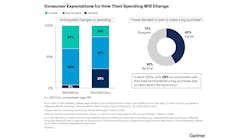While India has potential to be the fastest-growing large economy in the world over the next four decades, U.S. businesses find its economic and cultural diversity, complicated policy-making processes and uneven development difficult to navigate, according to a report from PwC. The report, Through the Looking Glass: What Successful Businesses Find in India, recommends thatcompanies entering or expanding their businesses in India recognize distinct patterns in the market and create a tailored strategy based on differentiators. That means creating the right value proposition, designing the appropriate operating model, investing in financial and human capital, and understanding the local business environment.
The report states that India’s diverse and large consumer segments are driving purchases across categories and its workforce is expected to be larger than its Chinese counterpart in the next 15 years.
“India is a great prospect for global retail businesses, as a new demographic of consumers is now driving economic growth,” said Lisa Feigen Dugal, PwC’s U.S. retail and consumer sector advisory leader. “Seventy percent of Indians who live in rural areas are now spending at a faster rate than urban Indians, while many Western companies have been targeting upper or middle-income consumers. Companies who can determine the needs and preferences of this new group of consumers will find their tailored strategy to be the key to success.”
“India’s labor and research capabilities are proving to be valuable to global businesses, and as the Indian government is looking to expand their infrastructures, many companies have the opportunity to export goods to help develop those initiatives,” said Robert Pethick, PwC’s U.S. industrial products sector advisory leader. “The patterns we’ve identified for companies to succeed in India are extremely pertinent to industrial products companies, including the increasing importance of creating a supply chain infrastructure they need for long-term growth in India.”
PwC’s report reveals five distinct patterns within India’s unique business environment that companies should consider to begin or expand upon in their India operations:
Pattern 1: The market is highly segmented
Companies must have a deep understanding of the socioeconomic trends across the different states in India, while determining what offerings might best meet their customers’ needs in those regions.
Pattern 2: Niche segments demand tailored solutions
While companies ideally would like to enter a new market with established products and services, this strategy may not always succeed in India where local preferences and desires must be considered and addressed for sustained success. Companies should customize products and services, providing a differentiated offering to command a price premium over an array of substitutes already available in the market.
Pattern 3: Relationships can make or break channel strategy
Building long-term partnerships with channels is a critical element of success in the Indian market. Investing in customized partner management programs and building the capabilities of the internal salesforce are very important in a relationship-driven market like India.
Pattern 4: Integration and collaboration are central to strong supply chains
Companies operating in the Indian market should build supply chains that respond to evolving demand and supply patterns. This requires the flexibility that comes from partnering and collaborating more with suppliers, which will help companies effectively and efficiently navigate through infrastructural and regulatory challenges.
Pattern 5: In India, think operating models for India
The operating model (organizational design, IT, salesforce structure, etc.) for entering and expanding business in India must be able to support differentiators such as agility, speed to market, and ability to drive low-cost innovations.


